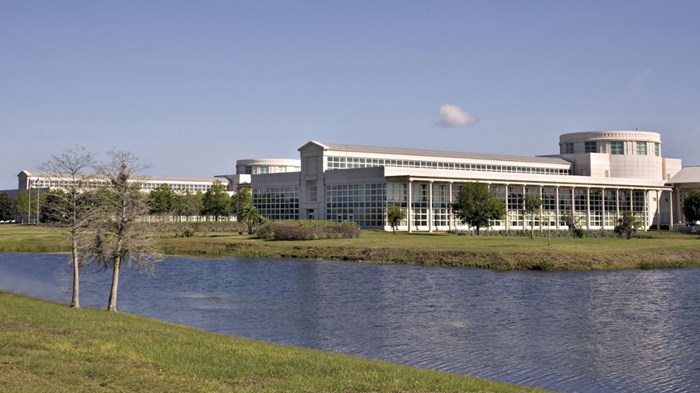
The debate over critical race theory has landed at Cru, one of the country’s most prominent parachurch ministries, where a 179-page letter alleging an overemphasis on racial justice has exacerbated tensions that have been quietly brewing within the organization for years.
Titled “Seeking Clarity and Unity,” the document was submitted to Cru president Steve Sellers in November 2020 and spread inside the organization before appearing online in May. Its authors, a grassroots group of Cru staff members, raise concerns that a “victim-oppressor worldview” has become embedded throughout the organization, dividing staff and detracting from the true gospel.
“In pursuing [diversity], we have inadvertently adopted a system of unbiblical ideas that have led us to disunity,” the document reads. “These concepts have created distrust, discouragement, and a host of other problems.”
Founded in 1951 as Campus Crusade for Christ, Cru’s mission statement is to “win, build and send Christ-centered multiplying disciples” through its well-known campus ministry programs and other evangelistic outreaches. The recent document suggests there’s a “gap” between this stated mission and its current ministry work, saying Cru’s approach to addressing issues of racism and oppression has led to “mission drift.”
The anti-CRT document says that “at least 1,000 staff” share the group’s concerns and features dozens of staff and donor testimonials, though a majority of them are anonymous. Only 11 contributors are cited by name, and there is no full list of signatories.
Cru remains a predominantly white organization. Out of roughly 8,000 American staff, 22 percent identify as Black, indigenous, or other people of color (BIPOC), according to the organization’s own tallies. Since 2015, the ministry has placed a growing emphasis on cultural competency and racial reconciliation.
Leaders have begun to speak about racism more overtly during staff conferences, and the ministry offers a training called “Lenses” on ethnic and cultural “oneness” for staff. Both efforts were singled out in the document as “social justice teachings.”
Various anonymous testimonials called the organization’s cultural competency training “political” and alleged “anti-white American rhetoric.” One anonymous staff (referenced as Minority Staff #30) said the trend within Cru and the church at large represents “a brand new religion of systemic racism, white privilege, and systems of power” that “labels all of Christian theology a racist oppressive ideology of whiteness.”
Throughout the document, contributors characterize the approach to race they see from leaders as a “false gospel,” “unbiblical,” and a threat to evangelism.
Disrupting unity
People throughout Cru, both the authors of the anti-CRT document and others, saw longstanding tensions over the ministry’s approach to race escalate last year. What began as a small, in-person meeting of five at Cru’s Orlando, Florida, headquarters to discuss the ministry’s racial justice emphasis in January 2020 quickly grew into a weekly Zoom meeting with over 350 mostly white staff at the onset of the COVID-19 pandemic.
From within that group, 60 people went on to write the anti-CRT document, against the backdrop of the nationwide calls for racial justice that shook across the country after the killings of George Floyd, Ahmaud Arbery and Breonna Taylor in 2020.
One of the group’s organizers is Scott Pendleton, chief of staff for Cru’s Jesus Film Project. He worries, as the document states, that the emphasis on racial justice detracts from the heart of Cru’s evangelism work.
“We can be united and show the world that we love each other through our identity in Christ,” he said. “Not because we’re trying to dismantle racist structures—though that has its place—but by focusing on who we are in Jesus.”
Pendleton and the authors of the anti-CRT document say they share concerns around the need for diversity and racial reconciliation but that efforts over the past five years have actually hurt Cru’s former “racial unity.” Pendleton said that some of the BIPOC staffers who joined in the criticism were particularly vocal with their concerns.
Others, though, believe that the organization’s push to highlight ethnic sensitivity and inclusivity has been instrumental in growing their faith, offering small but meaningful steps toward addressing what is seen as a broader issue within Cru.
Darryl Smith was one of many staff members who was caught off guard by the document. Smith has been on staff at Cru since 1996 and has served as director of oneness and diversity for the ministry for the past four years.
Smith said he guided several initiatives cited and critiqued in the document, yet the authors did not contact him with their concerns. As parts of the letter called out Cru’s cultural competency training and efforts to engage racial issues as “worldly,” “deceptive,” and “unbiblical,” he said he felt like “I was being told that my very presence as a Black man could cause Cru to mission drift.”
Cru’s national director Mark Gauthier acknowledged responses like Smith’s in a March 2021 video shared this week by blogger and scholar Valerie Hobbs.
“The distribution of the research caused a breach in trust among some of our staff and in particular our BIPOC staff. While their concerns of the group may have been well motivated, the manner in which the report was written and the distribution of the information was crushing to many of our BIPOC staff. The research effectively questioned all of the venues throughout Cru where we were talking about diversity,” he said.
“For our BIPOC staff in particular, it raised the question of whether we were backing away—whether or not we were backing away from our biblical pursuit of oneness and diversity,” he said. “Well, insofar as the research raised real issues, whether we like them or not, that is very helpful. However, the implications that are drawn from the research can lead one to believe that many of our diversity initiatives are unwelcome, ineffective, and constitute mission drift.”
Josh Chen, an area director in Portland, sees the document as an attempt to “narrow the scope of orthodoxy” by minimizing the importance of pursuing justice.
“I think the way that we’ve talked about the gospel for decades is a contextualization of the gospel to the baby boomer generation,” said Chen, who ministers primarily to young postgrads. “And for those who are trying to do the hard work of reimaging the good news for this generation we are being deemed as unbiblical.”
Pendleton told CT that he and his group, which skews older, are “grieved” over the tensions caused because of the letter. “We want to be diverse. We just want to be faithful to do it in a way that aligns with Scripture. And I know [those who disagree with us] do too. That makes it all the more complicated.”
Debating CRT
Critical race theory’s rise to the forefront of conservative public discourse, both inside and outside the church, has been recent and rapid. Originating as a relatively niche ’70s-era legal theory that suggests inequities of power are deeply embedded within society and coalesce along racial lines, it has become a frequent talking point among conservative and Republican pundits.
Last November, the Southern Baptist Convention’s six seminary presidents released a statement calling the theory “incompatible” with the denomination’s message, prompting at least four Black pastors to break with the denomination. Oklahoma, Idaho, and Tennessee, all states with Republican majority legislatures, recently banned public schools from teaching the theory, with nearly a dozen states having introduced similar legislation.
The anti-CRT document shared with Cru leadership draws its definition of the term from an article by megachurch pastor John MacArthur, along with resources by anti-critical race theory apologists like theoretical chemist Neil Shenvi and atheist James Lindsay. It makes no mention of prominent critical race theory scholars like late Harvard University professor Derrick Bell or UCLA law professor Kimberlé Crenshaw.
“It’s a piece of propaganda,” said Matt Mikalatos, a former program director who helped organize Cru’s staff conference. “It’s not reporting. It’s not designed to share two sides of a picture. It’s designed to push a very specific agenda.”
Many consider Cru’s 2015 staff conference a turning point, with speakers addressing the issue of justice and ethnic diversity more directly. Mikalatos said organizers wanted to ensure the conference would be “meaningful and transformative” for all attendees, rather than programming for the majority.
“That means the majority that’s used to having everything programmed for them would still have something that they would love, but someone else from a different spectrum of theology would also feel represented,” he said.
The conference, which the critical document alleged was “given over to the most radical social justice and CRT communicators,” featured speakers including Christena Cleveland—at the time a CT columnist and Duke Divinity School professor—as well as Andy Crouch, Francis Chan, and John Perkins.
Later conferences would include a group of Native American Christians welcoming the staff to their land, a message from pastor Joyce Emery (the first female pastor to be platformed by the biennial event), and a call for corporate repentance over racism from Christian cultural competency coach Latasha Morrison, author of Be the Bridge.
“I’ve learned a lot from hearing the experiences of my minority brothers and sisters in Christ and I grieved with them over their experiences,” said Pendleton. “It was a message that a lot of staff in the majority culture needed to hear, but after five years of [the same message] being repeated over and over again, there was no message of coming together to forgive each other.”
Top leaders at Cru said critical race theory has not been part of internal leadership discussions, with Gauthier noting that the organization does not “hold to or teach any worldly ideologies.”
Revisiting biblical frameworks
Gauthier says Cru is expected to release a robust document addressing Cru’s theological structure in the coming months.
“We didn’t have a clearly defined biblical framework for how we were approaching this,” said Gauthier. He stressed the importance of grounding the organization’s ministry in biblical ideology, an emphasis he acknowledges may have gotten lost in their attempt to combat racism.
While some topics are hard to discuss, particularly among a group that spans multiple generations, he hopes that a stronger emphasis on the Bible’s direct instructions regarding racism will help staff on both sides of the discussion to find common ground.
The anti-CRT document is not the only critical letter circulating within Cru’s online space over the past year. Following the appointment of three white individuals to high-ranking leadership positions (including Gauthier, who had previously served at Cru’s executive director), a public letter titled “A Humble Request for Leadership Process Transparency & Organizational Fidelity” was posted on a message board within the organization’s Facebook Workplace in October 2020. Calling the promotions a “missed opportunity” to elevate nonwhite leaders, the letter was drafted and edited by 14 staff members, all of whom are listed as signatures on the document.
The letter (referred to as a “staff uprising” in the anti-CRT document) asked for Cru leadership to show greater transparency in its hiring process as well as offer concrete steps for how the new appointees would “work to combat anti-blackness and anti-indigenousness and other forms of oppression.” In contrast to the mostly anonymous anti-CRT document, 574 staffers publicly cosigned the document.
“In a lot of ways, the [Seeking Clarity and Unity] document was hurtful because it was so secretive,” said Nich Beebee, a staff member who penned the initial draft of the “Humble Request” letter. “You had no idea who was a part of it other than the few people who were on the front.”
According to Pendleton, contributors to the anti-CRT document remained mostly unnamed because many within the group were “fearful” of being seen associated with the group, with some staff showing up to the Zoom meeting with fake names and their camera turned off.
Tensions on both sides
Gauthier said both documents “capture the tensions we have to embrace as we pursue our mission.”
Staff members told CT that posts on Cru’s Facebook Workplace highlight the organization’s sharp divisions. Following the killing of George Floyd, Cru president Steve Sellers openly wrestled on the forum about how to respond to the tragedy. “If I call this out specifically, why not every example of racism,” he wrote. “Why not publicly and vocally stand for the sin of abortion, the horrors of women being trafficked or for the assault on the biblical view of human sexuality?”
Some commented that the post felt tone deaf, eliciting the sentiment that “all sins matter.”
As those tensions have grown more evident, disagreements over Cru’s handling of justice and diversity issues have caused both seasoned and recently recruited leaders to resign from staff.
In a public letter, 19-year staff member Rasool Berry wrote that “an onslaught of resistance to the work of cultural competency, justice and faith integration” was one of the reasons for his departure earlier this year. He cited Pass the Mic’s #LeaveLoud movement, an initiative that encourages Black Christians to share their stories about leaving evangelical spaces, as inspiration for his public letter.
Longtime campus director Dan Flynn had been on staff with his wife, Paula, for over 30 years, but they opted to step down in 2019 due to concerns over the organization’s new “core value of wokeness.” In a personal testimonial written in the SCU document, Flynn cited recent female conference speakers and Cru’s failure to “educate” staff about traditional gender roles after a former staff member publicly came out as gay in 2019. (At the time, she said she was celibate “for the sake of her ministry” with Cru, but opted to leave the organization several months later.)
Two-year staffer Jocelyn Chung published her own resignation letter earlier this year, noting that she lost ministry supporters and was forced to shift to part-time after she began “embracing a more holistic gospel” that emphasized “the American Church’s dangerous complicity in White Supremacy, Christian Nationalism, and systemic inequality.”
Cru is not the only mission-focused parachurch group to face scrutiny over its response to recent social issues. InterVarsity received criticism in 2015 after inviting Faith for Justice’s Michelle Higgins to speak about Black Lives Matter at its Urbana conference. Higgins received death threats following her talk and InterVarsity was forced to clarify that it “does not endorse everything” about the Black Lives Matter movement.
The Navigators released a similar statement expressing its desire to “empower people of color” while also distancing itself from the BLM movement after it posted a black square online during a social media “black out” following the killing of George Floyd, prompting questions about the organization’s stance on racial justice.
Parachurch organizations have historically offered Christians across denominations a space to collaborate on issues deemed of primary concern. But as cultural tensions continue to rise, the viability of such collaborations will continue to be tested.
“Big tent ministry requires a generosity and a love and an ability to be uncomfortable that we in evangelicalism have not yet mastered,” said Mikalatos. “And, in a variety of ways, Cru is very much a reflection of evangelicalism.”
Curtis Yee is a faith and culture reporter in Sacramento, California.

Support Our Work
Subscribe to CT for less than $4.25/month


















